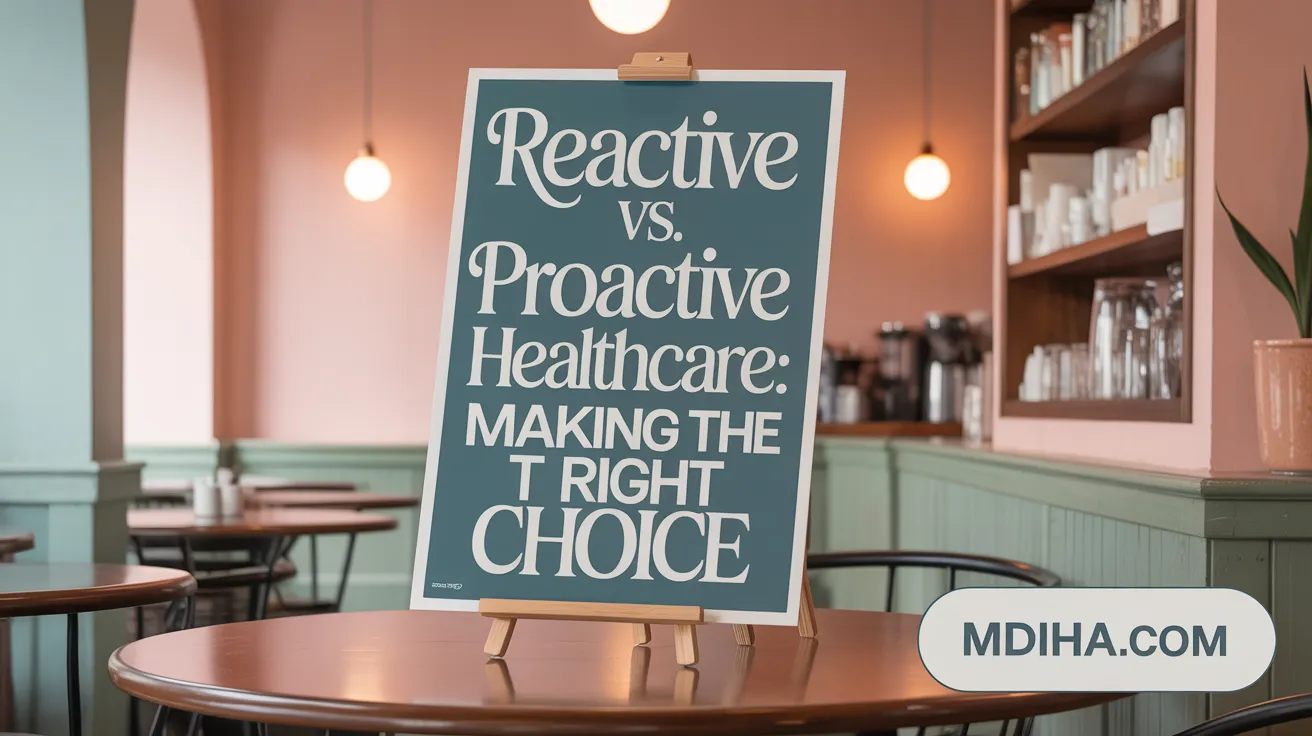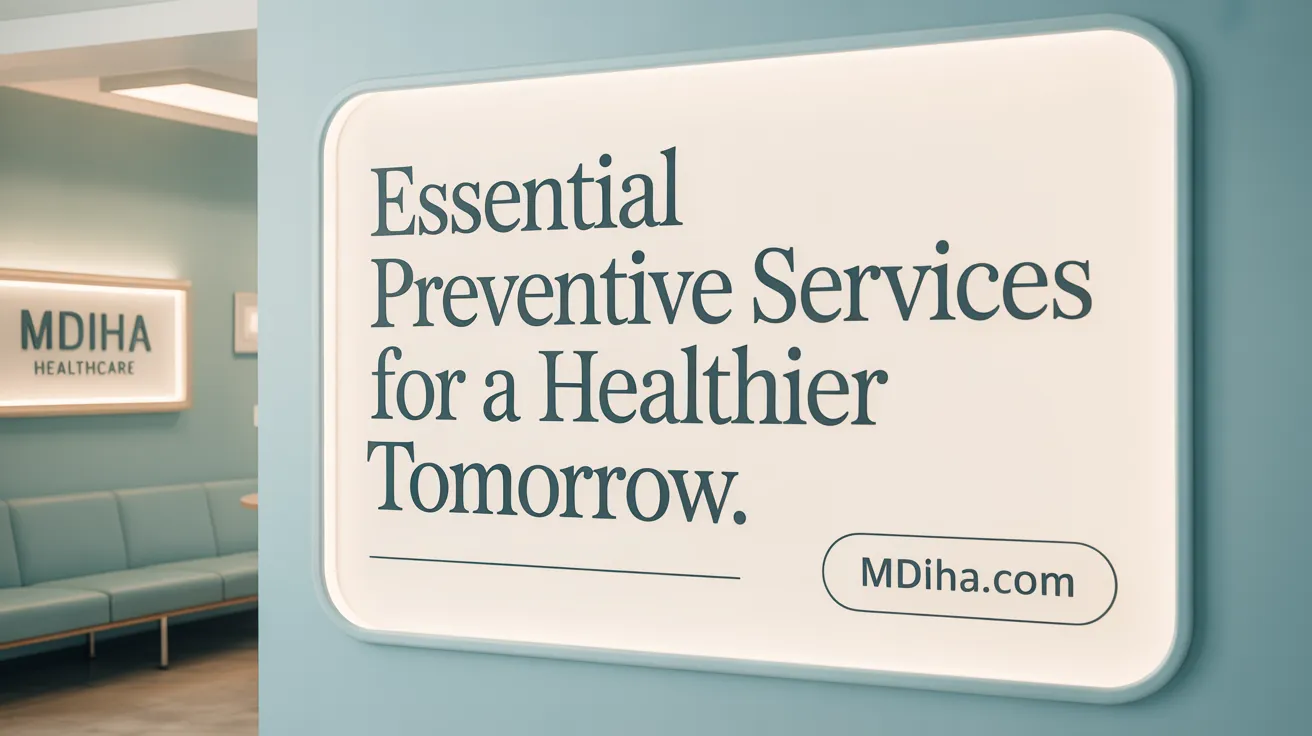The Shift Towards Preventive Medicine
Healthcare is undergoing a profound transformation, moving away from traditional reactive models that address illness after symptoms arise, toward proactive, preventive approaches that emphasize disease prevention, early detection, and holistic well-being. This evolution is fueled by advances in molecular science, technology, and a growing understanding of lifestyle’s impact on health. As chronic diseases increasingly burden healthcare systems worldwide, preventive medicine offers a promising route to improved health outcomes, cost savings, and enhanced quality of life.
Understanding Reactive vs. Proactive Healthcare Models

What differentiates reactive healthcare from proactive healthcare?
Reactive healthcare primarily addresses illnesses and symptoms after they manifest. This traditional model focuses on treating existing conditions, relying heavily on medication, surgeries, and symptom management. It tends to be more costly due to delayed interventions and often leads to poorer health outcomes. In contrast, proactive healthcare prioritizes preventing disease onset through regular check-ups, screenings, lifestyle interventions, and patient education. It emphasizes early detection and personalized care plans to maintain wellness and reduce disease risk over time.
How do costs and outcomes compare between reactive and proactive healthcare?
Reactive healthcare accounts for more than 75% of healthcare spending in the U.S., largely driven by chronic disease management. Treatment of advanced-stage illnesses involves higher costs and complex interventions. Conversely, proactive healthcare is more cost-effective by focusing on prevention and early detection. It reduces hospitalizations and long-term care needs, improving patient outcomes while lowering overall expenditures. Investments in preventive measures like vaccinations, lifestyle counseling, and screening tests yield substantial savings and enhance quality of life.
What role does patient engagement play in proactive healthcare?
Patient engagement is central to proactive healthcare, encouraging individuals to take an active role in managing their health. This involves regular communication with providers, adherence to screenings and lifestyle modifications, and education on disease prevention. Personalized outreach and support services help sustain these behaviors, fostering a sense of empowerment and responsibility. Engaged patients are more likely to maintain healthy behaviors, resulting in better outcomes and reduced need for reactive interventions.
The Science and Technology Driving Preventive Medicine Forward

What scientific advances are enabling modern preventive medicine?
Modern preventive medicine is propelled by significant scientific and technological breakthroughs. Advances in molecular biology and omics technologies, such as genomics, proteomics, and metabolomics, allow healthcare professionals to understand disease pathways at a molecular level. This understanding facilitates the development of precision and personalized preventive strategies tailored to an individual’s unique genetic makeup and risk profile.
Wearable technology plays a crucial role by providing continuous real-time monitoring of vital health indicators—including heart rate, blood pressure, glucose levels, and physical activity. The integration of these devices with advanced data analytics enables early detection of health anomalies, prompting timely preventive interventions that can avert disease progression (Preventive Healthcare Benefits).
Furthermore, regenerative medicine introduces groundbreaking preventive approaches, including prenatal interventions like fetal surgery to correct congenital defects such as diaphragmatic hernia and spina bifida. Such interventions reduce the risk of postnatal complications, enhancing long-term health outcomes from the earliest stages of life (Healthcare evolution from reactive to proactive).
Together, these scientific advances and technologies form a comprehensive toolkit that transforms preventive medicine from a generalized practice into a highly targeted, effective healthcare model, aiming to prevent disease before it manifests and promote sustainable health across the lifespan. For more on the role of digital health technologies in preventive medicine and integrating technology for enhanced personalized preventive healthcare, see the linked resources.
Preventive Care in Practice: Screenings, Vaccinations, and Lifestyle Modifications

What are key preventive care services and how do they help?
Preventive care encompasses routine health services designed to detect and stop disease before symptoms appear. Important services include screenings for blood pressure, cholesterol, diabetes, and various cancers such as breast, cervical, and colon cancer. These screenings allow early identification of potential health issues, which can be treated more effectively and with less intensity (Preventive Care Overview, Preventive health services, Preventive Care Overview).
Vaccinations are foundational preventive measures that protect individuals from infectious diseases. Immunizations against illnesses like influenza, HPV, and childhood diseases have proven to greatly reduce incidence rates and complications (Preventive services at no cost, Preventive Care Overview).
Lifestyle counseling is another vital aspect of preventive care. Guidance on adopting a healthy diet, engaging in regular physical activity, quitting smoking, and managing stress reduces the risk of developing chronic conditions such as heart disease and diabetes (Preventive medical care overview, Preventive health care overview, digital health technologies in preventive medicine). Collectively, these services contribute to improved longevity and quality of life (Healthcare evolution from reactive to proactive.
How accessible is preventive care through health insurance?
Access to preventive care has been improved significantly by health insurance policies. Most insurance plans, including those under the Affordable Care Act (ACA), cover a comprehensive set of preventive services at no cost to patients when provided by in-network health providers (Preventive health services coverage, Importance of preventive health care). This coverage typically includes annual physical exams, screenings, vaccinations, and counseling services.
Removing financial barriers encourages more individuals to utilize preventive services regularly, which leads to earlier disease detection and prevention (Preventive Care Overview, Moving from reactive to preventive medicine). This increases overall public health and can reduce long-term healthcare expenditures by lowering the need for costly treatments of advanced disease (Shifting from reactive to proactive healthcare).
Together, screenings, vaccinations, lifestyle interventions, and accessible insurance coverage form a strong foundation for effective preventive healthcare that benefits individuals and communities alike (Preventive Care Overview, Preventive health care overview, digital health technologies in preventive medicine.
Person-Centered and Holistic Approaches in Preventive Healthcare
How does person-centered care differ from traditional healthcare models?
Person-centered care represents a significant shift from traditional healthcare approaches. While traditional models often focus on diagnosing deficits and performing standardized, task-oriented assessments with minimal patient input, person-centered care prioritizes collaboration. It actively involves patients, their families, and caregivers, emphasizing respect for individual preferences, routines, abilities, and strengths. This approach fosters autonomy and empowers patients to participate in their own health decisions. For more details, see Comparing Traditional and Person-Centered Care Models.
Why is patient autonomy and collaboration important?
Autonomy and collaboration are central to improving health outcomes and patient satisfaction. Person-centered care promotes flexible routines tailored to individual choices rather than rigid healthcare schedules. This flexibility helps maintain dignity, encourages active participation, and supports better adherence to preventive strategies. More on this can be found in Principles of Person-Centered Care.
What role does community and social participation play in health?
Encouraging social engagement and community involvement enhances both mental and physical well-being. Person-centered models create home-like environments and consistent caregiver relationships, reducing isolation often seen in traditional care. Social participation fosters a sense of belonging, which is crucial for holistic preventive care. Refer to Traditional vs. Person-Centered Care Models for more information.
How are complementary, traditional, and integrative medicine integrated?
An integrative approach combines standard biomedical care with complementary, traditional, and integrative medicine—such as herbal medicines and nature-based therapies—to provide holistic preventive care. The World Health Organization supports integrating these modalities to improve health outcomes and expand access, aligning with culturally respectful, evidence-based practices. This broadens the preventive care toolkit beyond conventional medicine, offering personalized options aligned with the whole person's needs. Consult Traditional, Complementary, and Integrative Medicine: WHO for comprehensive insights.
This holistic and person-centered paradigm fosters healthier individuals and communities by addressing physical, psychological, social, and cultural dimensions of health, advancing the effectiveness of prevention strategies. For a broader perspective on preventive care frameworks, see Preventive Health Measures.
The Broader Impact: Public Health, Policy, and the Future of Preventive Medicine

What are the challenges and strategies in improving preventive care access and utilization?
Despite the clear benefits of preventive care, many individuals face barriers such as cost, inadequate access to primary care providers, geographic limitations, and low awareness about available services. These obstacles often prevent timely screenings and vaccinations essential for disease prevention (Preventive Care, Preventive health services, Barriers to preventive care).
To overcome these challenges, policy initiatives like the Affordable Care Act (ACA) have mandated coverage of preventive services without out-of-pocket costs, increasing utilization (Affordable Care Act resources, Preventive medical care saves lives. Mobile clinics extend reach to underserved communities by providing screenings and immunizations directly, breaking logistical and financial barriers (Preventive care benefits). Public education campaigns also play a critical role by raising awareness about the importance of preventive care and encouraging regular health check-ups (Teaching preventive care importance.
How is the healthcare system evolving to support preventive medicine?
The healthcare system is transitioning from fee-for-service toward value-based care and population health management models. Providers categorize patients into risk groups—high, medium, and low—to deliver targeted interventions efficiently. High-risk patients receive coordinated, multidisciplinary care while low-risk individuals benefit from virtual access and preventive services emphasizing convenience (Traditional models in population health management, Population health risk segmentation).
Digital health technologies in preventive medicine are central to this evolution. Wearable devices enable real-time health monitoring, allowing early detection of potential problems (Wearable Health Technology, Real-Time Health Monitoring. Telemedicine and electronic health records facilitate remote care and personalized health plans (Telemedicine and wearable devices). Additionally, advanced data analytics help predict disease risk, guiding proactive outreach and tailored preventive strategies (Predictive analytics in healthcare, Patient Engagement Improvement.
This shift supports optimized resource allocation, improves patient engagement and satisfaction, and ultimately contributes to better health outcomes and cost savings (Value-based care models, Improving health outcomes.
Public health policies supporting prevention
Governmental policies underpinning preventive care include mandated insurance coverage of screenings and immunizations, support for community-based prevention programs, and regulatory initiatives targeting social determinants of health (Preventive health services, Preventive medicine overview). These efforts align with broader public health goals to reduce disease burden and improve population wellness (Preventive medical care overview).
Future trends including digital health and personalized prevention
Looking ahead, personalized prevention driven by molecular insights and omics technologies promises precision health strategies tailored to individual risk profiles (Molecular insights into disease pathways, Omic platforms in precision medicine. The integration of wearable technology data with predictive analytics enables continuous monitoring and timely interventions (Real-Time Health Monitoring, Personalized Preventive Care. Multichannel digital platforms and telemedicine expand access while empowering patients to actively participate in their health management (Telemedicine and wearable devices, Patient engagement in proactive care).
The ongoing transformation toward Healthcare evolution from reactive to proactive, leveraging technology and personalized approaches, offers a sustainable path to improve public health, lower costs, and promote healthier aging across populations (Benefits of proactive healthcare, Proactive healthcare.
Embracing a Preventive Future in Healthcare
The transition from traditional reactive models to proactive, preventive healthcare is essential for addressing the challenges of aging populations, chronic disease burdens, and rising healthcare costs. Advances in science and technology empower personalized prevention strategies that catch disease early or halt it altogether. By adopting person-centered care approaches and supportive public health policies, the healthcare system can achieve improved equity, sustainability, and quality of life for individuals and communities. The proactive embrace of preventive medicine not only promises healthier lives but also a more efficient and resilient healthcare infrastructure for the future.
